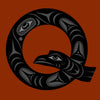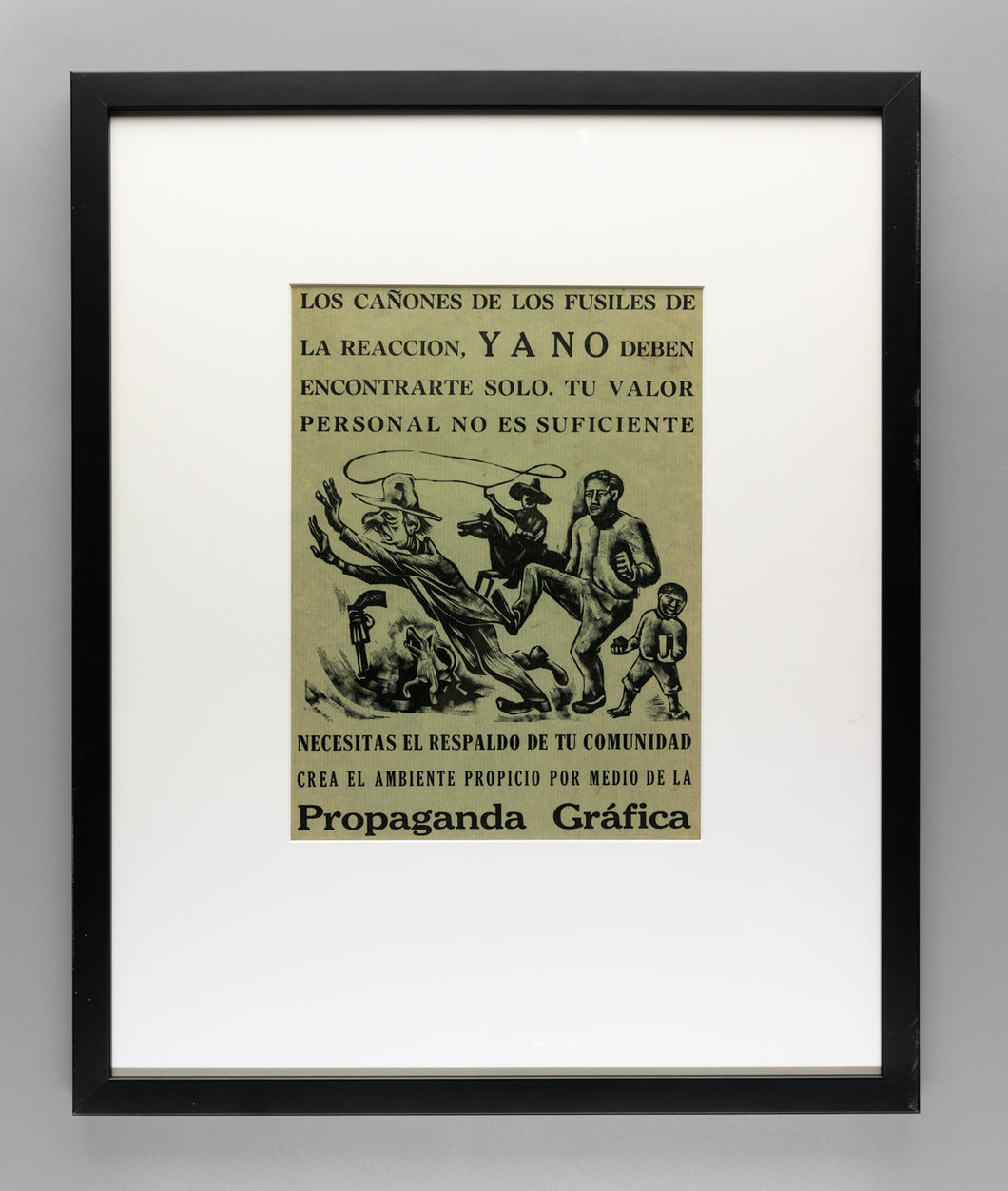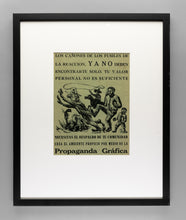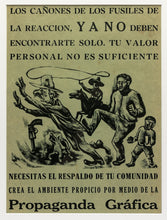Personal Courage is Not Enough, c. 1940 by Jose Chavez Morado (1909-2002)
Regular price
$875.00
Sale
broadside printed by the Taller de Grafica Popular, Mexico City
archival framing with an acid free mat and a contemporary wood frame
21" h x 17" w framed
violence. Image depicts community members uniting to expel a man, possibly a "camisa dorado" (gold shirt) who would be from the A.R.M. (Revolutionary Mexican Alliance), a fascist organization known for suppression of unions and violent domination of the poor.
“Rifles should no longer find you alone. Your personal valor is not enough. You need the support of your community. Create the proper environment through spreading information.”
José Chávez Morado was born into a humble family of mineworkers in the town of Silao, Guanajuato. His grandparents were avid book collectors and from early age he had access to their library which contained books on science and philosophy as well as illustrated magazines from which he copied images by the French engraver Gustave Doré.
Keen for adventure, in 1925 Chávez Morado boarded a steam train and left for the United States to seek work and earn his fortune. His first jobs included washing dishes and agricultural work, and he ended up packing salmon at a factory in Alaska where he worked with prisoners and illegal immigrants. The money he earned enabled him to travel to Los Angeles where he studied at the Chouinard Art Institute. He then returned to Silao, where his father opened a shop to sell his work. The enterprise was not entirely successful, so Chávez Morado then moved to Mexico City in the hope of selling more of his work.
In 1931 he won a scholarship from the government of his home state, Guanajuato, to study at the Escuela Central de Artes Plásticas, the art school of UNAM (Universidad Nacional Autónoma de México) in Mexico City, where he learnt printmaking from Francisco Díaz de León and Emilio Amero. He also spent time at the Centro Popular de Pintura 'Saturnino Herrán', where he met Leopoldo Méndez. Fascinated by Méndez's work, Chávez Morado removed his posters from lamp-posts and put them up in his room. In 1933 he became a teacher of drawing in primary and secondary schools, and two years later he was appointed head of the Sección de Artes Plásticas at the Fine Arts Department of SEP (Secretaria de Educación Pública/Ministry of Education). In the same year he married the artist Olga Costa; their home in the city of Guanajuato is now a museum devoted to their work.
Fuelled by his commitment to social change, Chávez Morado joined the Mexican Communist Party in 1937. He was a founding member of the LEAR in 1934 and then became a member of the TGP in 1938, working with the collective until 1941. At the TGP he did not believe in selling prints as art objects, spending his time instead producing leaflets and posters on political themes. With other TGP members he would post these in streets at night, a dangerous activity as rival groups prowled the streets removing anything that they considered to be propaganda.
As well as printmaking, Chávez Morado also painted murals, in particular a mural at the Alhóndiga de Granaditas in Guanajuato, a history museum of which he was Director during the 1960s. This depicted Miguel Hidalgo, the initiator of the Mexican Independence movement in 1810, and was inaugurated during the independence celebrations of 1955. Chávez Morado was also responsible for some of the sculptures in the courtyard of the National Anthropology Museum in Mexico City.
He travelled widely, visiting Cuba, Egypt, Spain, Greece and Turkey. In 1974 he received the Premio Nacional de Artes in Mexico. He died in 2002 at the age of 93, at his home in Guanajuato.



